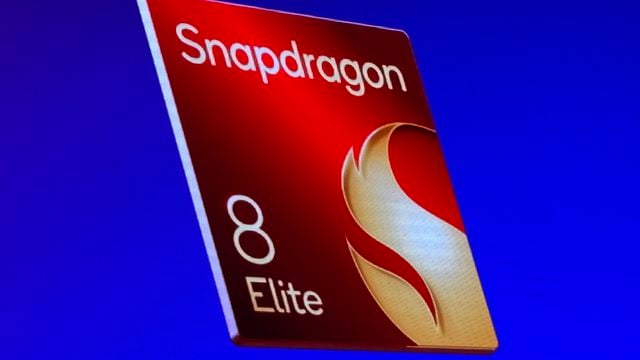TECH

The Snapdragon 8 Elite is Qualcomm’s fastest mobile chipset, promising significant upgrades to efficiency and performance over its predecessors. This is, in fact, the first mobile chipset to use Qualcomm’s in-house Oryon CPU cores, which were previously exclusive to Snapdragon X Elite chips for laptops. But how big of a leap is it over the older yet still powerful Snapdragon 8 Gen 2? We’ll run them down through multiple benchmarks and break down the differences to find out.
Let’s quickly go through the spec sheet first:
| SD 8 Elite | SD 8 Gen 2 | |
|---|---|---|
| Announced | October 2024 | November 2022 |
| Process node | 3nm | 4nm |
| Manufacturer | TSMC | TSMC |
| CPU | 2 x 4.32GHz — Oryon 6 x 3.53GHz — Oryon | 1 x 3.2GHz — Cortex-X3 2 x 2.8GHz — Cortex-A715 2 x 2.8GHz — Cortex-A710 3 x 2GHz — Cortex-A510 |
| GPU | Adreno 830 GPU Unreal Engine 5.3 running Nanite on smartphones Hardware accelerated ray tacing Snapdragon Elite Gaming features | Adreno 740 GPU Hardware accelerated ray tacing Snapdragon Elite Gaming features |
| NPU | Qualcomm Hexagon NPU Multimodal Gen AI support | Qualcomm Hexagon NPU |
| Memory | LPDDR5x, up to 5.3GHz | LPDDR5x, up to 4.2GHz |
| Storage | UFS 4.0 | UFS 4.0 |
| USB | USB Type-C version 3.1 Gen 2 | USB Type-C version 3.1 |
| Camera | Spectra triple 18-bit AI ISPs Up to 320MP single camera Up to 108MP single camera with zero shutter lag Up to 48MP triple cameras with zero shutter lag Limitless real-time semantic segmentation Up to 8K/30fps or 4K/120fps video recording | Spectra triple 18-bit ISPs Up to 200MP single camera Up to 108MP single camera with zero shutter lag Up to 8K/30fps or 4K/120fps video recording |
| Connectivity | Snapdragon X80 5G modem Downlink: 10Gbps Uplink: 3.5Gbps Wi-Fi 7 (peak speed: 5.8Gbps) Bluetooth 6.0 Ultra Wideband (UWB) support | Snapdragon X70 5G modem Downlink: 10Gbps Uplink: 3.5Gbps Wi-Fi 7 (peak speed: 5.8Gbps) Bluetooth 5.3 |
AnTuTu (v10) results
AnTuTu is a popular benchmarking tool for measuring different aspects of a device, such as CPU, GPU, memory, and UX performance. The total AnTuTu score represents the overall strength of a device.
Here’s how the two chips have performed: The iQOO 13, powered by Snapdragon 8 Elite, has almost double the AnTuTu score of the Snapdragon 8 Gen 2-powered iQOO 11. The former gets 2.8 million AnTuTu points, while the latter only manages 1.4 million AnTuTu points.
The AnTuTu score breakdown below reveals that the GPU received the biggest upgrade, with a more than 110% increase, while the CPU score is 71% higher.
| SD 8 Elite | SD 8 Gen 2 | |
|---|---|---|
| AnTuTu score | 2,802,747 | 1,425,565 |
| CPU | 631,482 | 367,645 |
| GPU | 1,208,815 | 575,107 |
| Memory | 505,708 | 264,141 |
| UX | 456,742 | 218,672 |
AnTuTu score shows a massive performance gap between the Snapdragon 8 Elite and Snapdragon 8 Gen 2, with the former leading the race. Let’s now look at the Geekbench scores that’s more popular for measuring CPU performance.
Geekbench (v6) results...Geekbench evaluates a device’s CPU performance through a series of tests designed around practical scenarios. The tests include image processing, compression (text and image), speech recognition, and PDF rendering.
The Snapdragon 8 Elite-powered iQOO 13 received over 3,000 points in the single-core test and 9,702 points in the multi-core test. The iQOO 11, driven by Snapdragon 8 Gen 2, achieved 1,986 single-core and 5,470 multi-core points.
| SD 8 Elite | SD 8 Gen 2 | |
| Single core | 3,056 | 1,986 |
| Multi core | 9,702 | 5,470 |
The single-core score represents the CPU strength of a device when executing tasks using a single core. In contrast, the multi-core score evaluates how well a CPU can handle tasks when multiple cores are at work.
Geekbench also highlights a big gap in the CPU performance between the Snapdragon 8 Elite and 8 Gen 2, with the former leading the chart.
3DMark Wild Life Stress Test results...This popular gaming test evaluates sustained GPU performance under heavy workloads. The lowest loop score indicates the lowest level of performance, and the best loop score indicates the highest level of performance during the extended testing period.
Here’s how the two chips have performed:
| SD 8 Elite | SD 8 Gen 2 | |
| Best loop score | 19,617 | 12,638 |
| Lowest loop score | 11,782 | 7,123 |
| Stability | 60.1% | 56.2% |
The Snapdragon 8 Elite-powered iQOO 13 has over 55% higher best loop score and 65% higher lowest loop score than the iQOO 12, powered by Snapdragon 8 Gen 2. The stability is also better with the Elite chip.
Snapdragon 8 Elite vs 8 Gen 2: Key differences
CPU: The Snapdragon 8 Elite and the 8 Gen 2 have eight CPU cores. However, the core configurations differ. The former chip has two Oryon cores clocked at 4.32GHz and the remaining six Oryon cores at 3.53GHz.
The Snapdragon 8 Gen 2 has one Cortex-X3 prime core at 3.2GHz, four performance cores (2 x Cortex-A715 at 2.8GHz, 2 x Cortex-A710 at 2.8GHz), and three Cortex-A510 power-efficiency cores at 2GHz. So, the Snapdragon 8 Elite has a much higher peak CPU frequency of 4.32GHz (vs. 3.2GHz on the 8 Gen 2). It also has all big CPU cores, giving additional performance boost.
GPU: The Snapdragon 8 Elite chip has an Adreno 830 GPU, which is much superior to the Adreno 740 that comes with Snapdragon 8 Gen 2. The newer GPU features sliced architecture that significantly improves performance and efficiency. The chip also has many gaming advancements, making gaming more immersive and enjoyable with the Snapdragon 8 Elite.
The Elite chip brings better ray-tracing capabilities and improvements to Snapdragon Elite Gaming features such as Qualcomm Adaptive Performance Engine, Snapdragon Game Super Resolution, Adreno Frame Motion Engine, and more.
NPU: While both chips have hexagon NPUs, the Snapdragon 8 Elite has an improved NPU with higher performance. The Elite’s NPU also features on-device personalization and multimodal support.
Camera: The Snapdragon 8 Elite supports a maximum of 320MP single camera, which is 200MP for the 8 Gen 2. Well, that’s not the most interesting part, as we don’t even see 200MP in many phones. What’s more important is the limitless semantic segmentation on the Snapdragon 8 Elite. This means the new chip can identify far more objects in a frame and can accurately apply blur, bokeh effects, color adjustments, and other variables that can drastically improve the accuracy and quality of images and videos.
The Snapdragon 8 Elite features on-device video object eraser to remove unwanted elements from videos. Qualcomm has also added Insight AI to the chip that provides real-time skin and sky adjustments to create more natural color and lighting in uncertain conditions.
Connectivity: The Snapdragon 8 Gen 2 uses the Snapdragon X70 5G modem, while the 8 Elite has a newer Snapdragon X80 5G modem, although the download/upload speeds are the same. The peak download speed is 10Gbps, and the peak upload speed is 3.5Gbps.
The newer modem has a dedicated AI tensor accelerator that achieves multi-gigabit 5G speeds in more places with the first 4×6 MIMO solution and features more accurate location positioning.
The Snapdragon 8 Elite has a Qualcomm FastConnect 7900 mobile connectivity system with a peak speed of up to 5.8Gbps. The FastConnect 7800 on the 8 Gen 2 also offers the same peak speed, but the newer one brings several advantages. The FastConnect 7900 supports Bluetooth 6.0 (vs. 5.3 on FastConnect 7800) and is more efficient. It’s also the first to integrate Wi-Fi ranging, Bluetooth wireless technology, and UWB proximity technologies for object tracking, building access control, and more.
Popular Snapdragon 8 Elite phones:
-Samsung Galaxy S25 / S25+ / S25 Ultra
-iQOO 13
-OnePlus 13
-Realme GT 7 Pro
Popular Snapdragon 8 Gen 2 phones:
-Samsung Galaxy S23 / S23+ / S23 Ultra
-OnePlus 12R
-iQOO 11
-OnePlus Open
-Xiaomi 13 / 13 Pro
mundophone

No comments:
Post a Comment